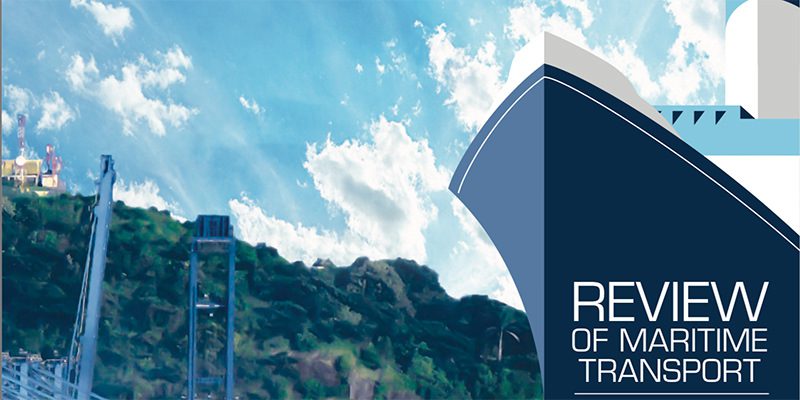Was The World’s ‘Northern-Most Island’ Erased From Charts?
by Kevin Hamilton (University of Hawaii) In 2021, an expedition off the icy northern Greenland coast spotted what appeared to be a previously uncharted island. It was small and gravelly,...


by Salvatore R. Mercogliano, Ph.D. (gCaptain) Many members of the maritime industry enter the profession without an adequate knowledge of what preceded it and how it evolved over time. Even those who graduate from professional institutions, such as the states or federal maritime academies, may have only a passing knowledge, while many outside the profession are starved for information on the profession. This feature will highlight maritime literature, both old and new, and offer to gCaptain readers the must have works to place on their bookshelves.
The first entry on the gCaptain Bookshelf is not a book per se, but an annual report produced by the United Nations Conference on Trade and Development (UNCTAD). Since 1968, the annual Review of Maritime Transport, “provides an analysis of structural and cyclical changes affecting seaborne trade, ports and shipping, as well as an extensive collection of statistical information.” Since 80 percent of the international trade is carried on the sea, this report highlights the key role that shipping provides in sustaining the world economy.
The Review of Maritime Transport documents the growth of world seaborne traffic, with 10.7 billion tons moving annually, up four percent from the previous year and a twenty-fold increase since 1950. The report highlights five areas; Development in International Seaborne Trade; Structure, Ownership, and Registration of the World Fleet; Freight Rates and Maritime Transport Costs; Ports; and Legal Issues and Regulatory Developments. Some key take-aways from this year’s report include:
The report’s ability to document, quantify, and detail the issues facing the world’s shipping industry are relevant to everyone. In the realm of seaborne trade, it continues its growth, from an average rate of 3.5 percent between 2005 and 2017, with projected uptick to 4 percent in 2018 and 3.8 percent annually until 2023. At the heart of the uncertain outlook predicted is the rising trade tensions between the United States and the People’s Republic of China, as well as America’s adversarial relationship with Canada, Mexico, and the European Union.
In terms of flags of registry, the Marshall Islands grew and supplanted Liberia as the second largest in the world, behind Panama. Ship construction and demolition remained focused in East Asia and South Asia, respectively. The container shipping industry netted a profit of $7 billion by the end of 2017, with CMA CGM having the best year of all firms. The three mega-alliances in the container trade continue to construct vessels on an economy of scale principle with two-thirds of all new containership orders being over 14,000 TEU capacity.
The largest ports continue to grow and consolidate while port operators work closer with carriers to solicit their business. They also struggle to maintain tracking and measurements for carriers and shippers to properly plan and provide enough decision-making information, while at the same time maintaining security from cyber threats.
Overall, the seven key takeaways for 2018 are:
Before any study of the industry can take place, it is important to see where the World’s maritime sector is today. The Review of Maritime Transport, at 102 pages, should be an immediate download for all involved or interested in the maritime sector. The publication of the Review of Maritime Transport should be refreshed every October and considered essential material for those with an interest in global shipping.
Review of Maritime Transport 2018
Join the gCaptain Club for curated content, insider opinions, and vibrant community discussions.


Join the 105,895 members that receive our newsletter.
Have a news tip? Let us know.
Access exclusive insights, engage in vibrant discussions, and gain perspectives from our CEO.
Sign Up




Maritime and offshore news trusted by our 105,895 members delivered daily straight to your inbox.



Essential news coupled with the finest maritime content sourced from across the globe.
Sign Up